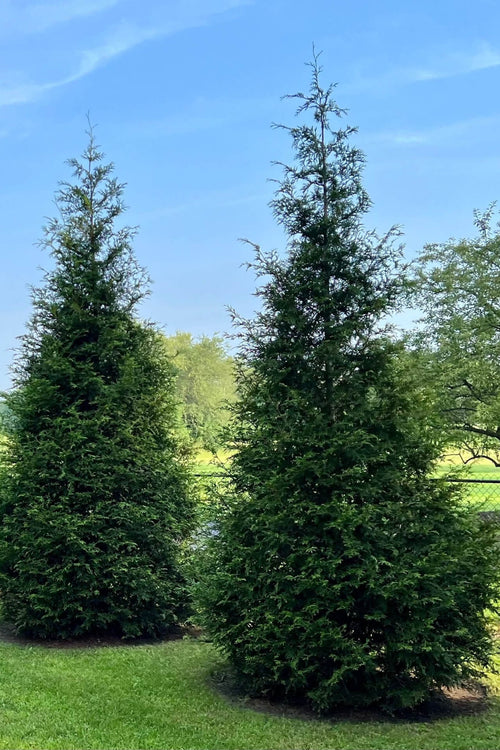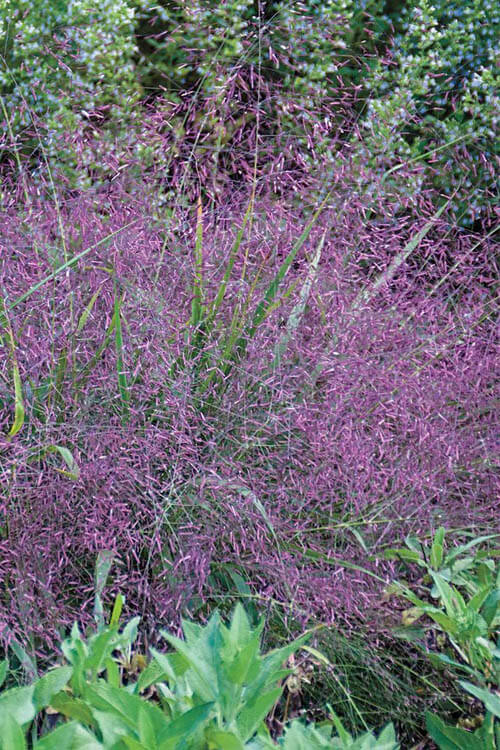Giants, Guardians, and Greenery
Evergreens, the steadfast residents of our landscapes, are an enduring symbol of vitality and strength. These remarkable trees and shrubs retain lush green foliage throughout the year, bringing life and color to even the dreariest seasons. In this exploration of evergreens, we will delve into the towering giants like the Green Arborvitae, the aromatic beauty of Cedar trees, the resilient Loblolly Pines, the rugged Pitch Pines, the versatile Shortleaf Pines, the elegant Northern Privets, and the charming California Privets. We will also uncover these evergreens' myriad benefits, from air purification to protecting from harsh winter winds, enhancing privacy, and reducing noise pollution.
Giant Green Arborvitaes: Towers of Elegance
The Green Arborvitae, or Thuja occidentalis, stands tall and proud as one of the most popular evergreens in landscaping. Known for their pyramidal shape and vibrant green foliage, they are often used as privacy screens and windbreaks. These arborvitaes can reach heights of up to 60 feet, creating a majestic presence in any garden. Green Arborvitaes thrive in well-drained soil and are remarkably adaptable to various growing conditions, making them a favorite among gardeners and homeowners alike.
Cedar Trees: Aromatic Sentinels
Cedar trees, specifically the Eastern Red Cedar (Juniperus virginiana), exude a distinct fragrance that perfumes the air around them. Their reddish-brown bark and feathery foliage provide a rustic charm that complements both rural and urban landscapes. Beyond their visual and olfactory appeal, cedar trees also have historical significance, often symbolizing wisdom and strength. These evergreens are highly resilient and thrive in poor soils and harsh climates.
Loblolly Pines: The Resilient Southerners
Loblolly Pines (Pinus taeda) is a quintessential part of the southern United States' landscape. Their towering trunks and slender needles offer a stark contrast against the blue skies of the South. These hardy and adaptable trees can grow in various soil types. Beyond their aesthetic value, Loblolly Pines are vital for wildlife, providing shelter and sustenance for multiple species.
Pitch Pines: Rugged Survivors
Pitch Pines (Pinus rigida) is the embodiment of resilience. Thriving in challenging environments, they often colonize areas devastated by fire. Their distinctive, twisted trunks and long, slender needles lend them an air of rugged beauty. These pines are excellent for wildlife habitat, offering food and shelter to various species. In addition to their ecological importance, Pitch Pines contribute to stabilizing soil and preventing erosion.
Shortleaf Pines: Versatile and Valuable
Shortleaf Pines (Pinus echinata) are actual utility players among evergreens. They are valued for their straight trunks and versatile wood used in construction and woodworking. These pines also play a crucial role in wildlife habitat, offering food and nesting sites for numerous species. Shortleaf Pines are drought-resistant and adaptable, making them a valuable addition to reforestation efforts.
Northern Privets: Elegant and Enigmatic
Northern Privets (Ligustrum x ibolium) are charming evergreen shrubs known for their dense, glossy foliage and fragrant white flowers. They are often used for hedging and landscaping, providing an elegant touch to gardens and pathways. These privets are hardy and withstand various growing conditions, making them famous for creating privacy screens and decorative borders.
California Privets: Coastal Beauty
California Privets (Ligustrum ovalifolium) thrive along the Pacific Coast and add a touch of coastal beauty to landscapes. Their lush green leaves and small, fragrant flowers make them a delightful choice for hedging and decorative purposes. These evergreens are easy to grow and maintain, making them a favorite in California gardens.
Benefits of Evergreens
- Air Purification
Evergreens are silent heroes in the battle against air pollution. Through a process known as transpiration, they release oxygen. The trees also absorb harmful gases like carbon dioxide and sulfur dioxide. This natural air purification system enhances the overall air quality, providing fresh air for urban and rural areas.
2. Protection from Harsh Winter Winds
In regions prone to biting winter winds, evergreens serve as natural windbreaks. Their dense foliage helps reduce wind velocity, protecting buildings, gardens, and delicate plants from the ravages of cold gusts. This foliage provides comfort and contributes to energy conservation by reducing heating costs.
3. Privacy and Noise Reduction
Evergreens are masters at creating privacy screens. Tall, densely packed evergreen trees and shrubs can shield your home and garden from prying eyes, offering tranquility and seclusion. Additionally, their foliage acts as a natural sound barrier, dampening noise from nearby roads and neighbors, making your outdoor space an oasis of calm.
Evergreens, including the towering Green Arborvitaes, the aromatic Cedar trees, the resilient Loblolly Pines, the rugged Pitch Pines, the versatile Shortleaf Pines, the elegant Northern Privets, and the charming California Privets, are essential components of our natural landscapes. Their enduring greenery and diverse benefits, from air purification to protection from harsh winter winds, privacy provision, and noise reduction, make them indispensable in our urban and rural environments. As we continue to appreciate and harness the unique qualities of evergreens, we ensure that these magnificent trees and shrubs will stand tall and green for generations to come, enriching our lives and our planet.



















































